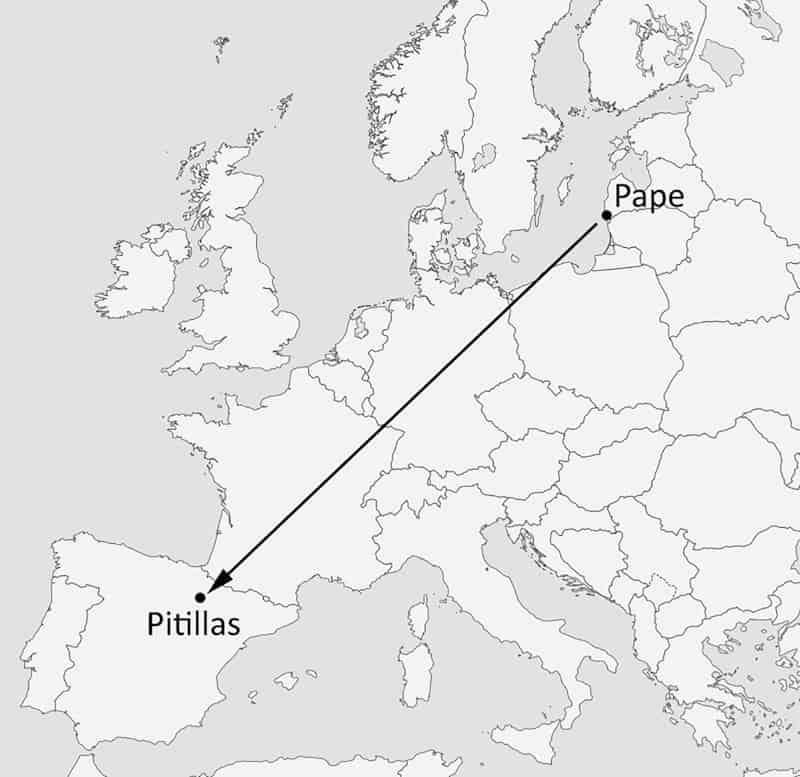Tiny bat breaks long-distance record on an epic journey across Europe
When biologists recovered a previously ringed bat in northern Spain, they were baffled. The small Nathusius’ pipistrelle male had travelled more than 2,200 km from Latvia – making its journey a long-distance record among migratory bats worldwide.
By Juan Tomás Alcalde
Bats are the only mammals capable of active flight. This ability allows them to travel long distances each night, compared to their small size. In temperate zones, some species have even developed migratory habits, which means they fly long distances from their breeding grounds to winter hibernation areas. In Eastern Europe, migratory movements of bats tend to be in a northeast-southwest direction and can exceed 1,000 km.
Nathusius’ pipistrelle (Pipistrellus nathusii) is the European bat that flies the longest distances, despite its small size (5-6 cm) and weight (usually less than 10 g). Its distribution covers major parts of Europe, from Fennoscandia and the British Isles in the north to Mediterranean areas in the south. The small bat feeds on aquatic flies, midges, mosquitoes and caddis flies, and roosts in trees and buildings.
Since many migratory species seem to be affected by global climate change, a group of biologists from Latvia and Germany wanted to find out if the same applies for Nathusius’ pipistrelles. To track the small insectivores, they banded about 17,000 of these bats between 2014 and 2018 at the Ornithological Station Pape, which is located on the southwestern coastline of Latvia. One of their goals was to compare recent migratory routes with data from 1985-1992.
They caught the bats by using funnel traps, which were set at their migratory corridor along the shore of the Baltic Sea.
A record-setting journey
Ultimately, one of these bats, a male Nathusius’ pipistrelle, ringed in August 2015, was recovered dead in northern Spain, in the Pitillas’ Lagoon Natural Reserve, in March 2017.

According to the researchers, this observation suggests that the individual flew a minimum distance of 2,224 km, from northeast to southwest Europe. This is the longest documented movement of a banded bat in the world and the only one that exceeds 2,000 km. The previous record of long-distance migratory flight was also held by a male Nathusius’ pipistrelle, which flew 1905 km from Latvia to France.
In general, Nathusius’ pipistrelles follow the coastline of the Baltic countries, which suggests that the recovered bat did not migrate between Latvia and Spain in a straight line. Therefore, the recorded travel distance of 2,224 km is most likely even underestimated.
The finding of this bat in early March suggests that it most likely hibernated at the Iberian Peninsula, yet the researchers have no information about its arrival at the hibernation site. Also, they are unaware of where the bat travelled throughout the 567-day period between its ringing and recovery.
Nathusius’ pipistrelle is scarce in Spain, but several records in the north of the country have been recently published, most of them in late summer and autumn, suggesting that the northern Iberian Peninsula may be an important wintering place for their migrating populations, as it has also been found for lesser noctules (Nyctalus leisleri).
One of these records originates from a Nathusius’ pipistrelle carcass found at a wind farm. Taking into account that this species is one of the most threatened by wind turbines in Europe, the researchers stress: “International efforts should be taken along these bats’ migration route to reduce their mortality at wind turbines and to protect habitats essential for migration.”
You can learn more in the original article here: